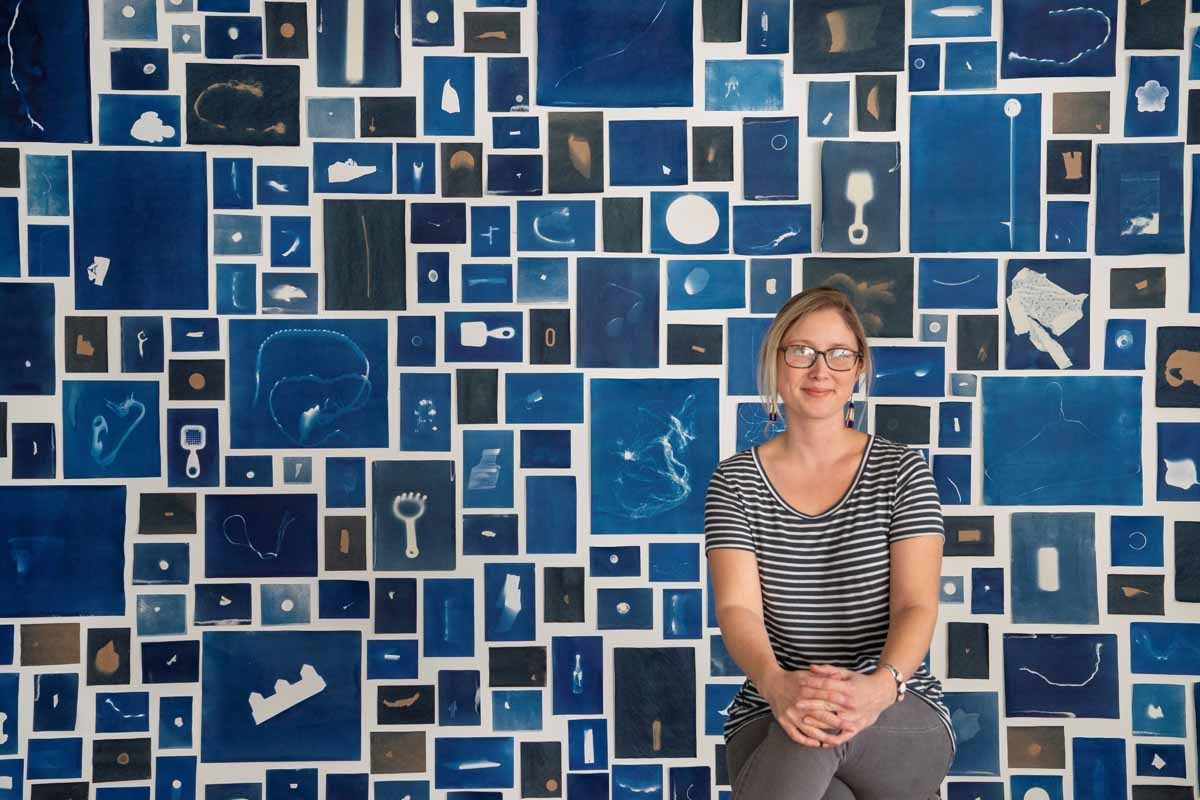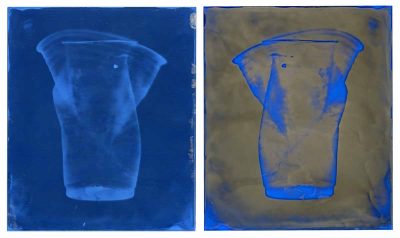
Using historic and modern techniques, photographer Elizabeth Ellenwood will use a 2019 Connecticut Sea Grant Arts Support Award to transform plastic beach trash and microplastics into images intended to call attention to global ocean pollution.
“What has been a lifelong practice of beach combing has evolved into a movement to bring awareness to the crisis of ocean pollution we face today,” Ellenwood, a Pawcatuck resident pursuing a master of fine arts degree at the University of Connecticut, explained.
Ellenwood was recommended for the $1,000 award, this year jointly funded by Connecticut Sea Grant and the Connecticut Department of Economic Development’s Office of the Arts, by an independent Arts Award Review Panel as part of the competitive CTSG Arts Support Awards Program. The program is celebrating its 10th anniversary this year, beginning with a retrospective exhibition, “Crosscurrents,” at the Alexey von Schlippe Gallery at the UConn Avery Point campus. It ran from January through April, showcasing the works of 13 Sea Grant-supported artists.
Ellenwood plans to display the works created with the award at the William Benton Museum of Art at the UConn Storrs campus and hopes to also show her work at the Alexey von Schlippe Gallery.
Syma Ebbin, Sea Grant research coordinator who oversees the arts award program, noted that the panel selected Ellenwood’s project, “Among the Tides,” based on its “strong narrative, relevance to Sea Grant’s mission, commitment to achieving greater awareness of trash in waterways and use of found materials, and aesthetic transformation of these materials into something quite beautiful.”
The interdisciplinary component of the project was an additional strength, Ebbin said. The artist has collaborated with researchers at the University of Rhode Island and UConn on microplastic samples, and hopes to convene a transdisciplinary panel of faculty at Avery Point to collaborate on a lecture or other activity as a companion to an exhibit of her work.
Using the cyanotype process developed in the mid-1800s that creates photographic prints without the use of a camera, Ellenwood creates images of plastic beach trash on chemically treated blue paper exposed to the sun. That is followed with a second step using a separate historic technique – that of wet plate collodion – to transfer the image onto a piece of colored glass. Subjects for the images have included a discarded balloon, a take-out cup, a sandwich bag and a lighter.

For microplastics – tiny plastic fragments that can harm wildlife if ingested – Ellenwood uses digital photography to capture images of the brightly colored plastic shards found in samples of sand examined under microscopes.
Ellenwood noted that awareness and concern about plastic pollution have been growing worldwide, as have efforts to reduce plastic use. That includes a phased-in ban of single-use plastic bags at retail outlets adopted by the Connecticut Legislature this year. Last summer Connecticut Sea Grant joined with the Long Island Sound Study and Mystic Aquarium on a campaign to encourage people to “break the single-use plastic habit” that will continue this summer, with additional groups participating.
“I want my artwork to be part of the ocean conservation discussion, a part of the momentum for change in my lifetime,” Ellenwood concluded.
Information about the Connecticut Sea Grant Arts Support Awards Program can be found here.